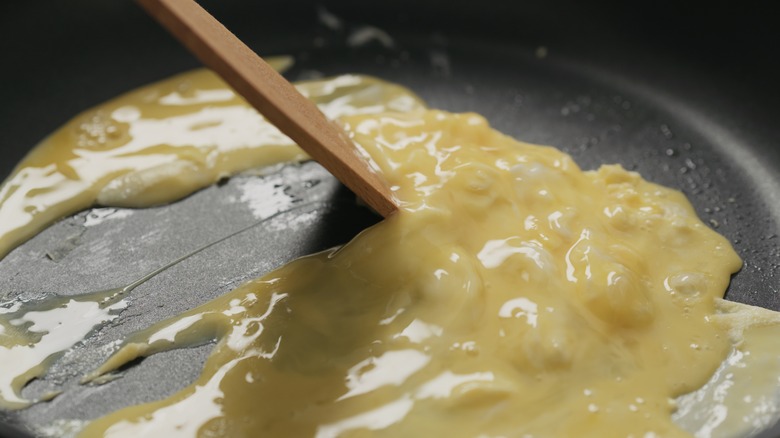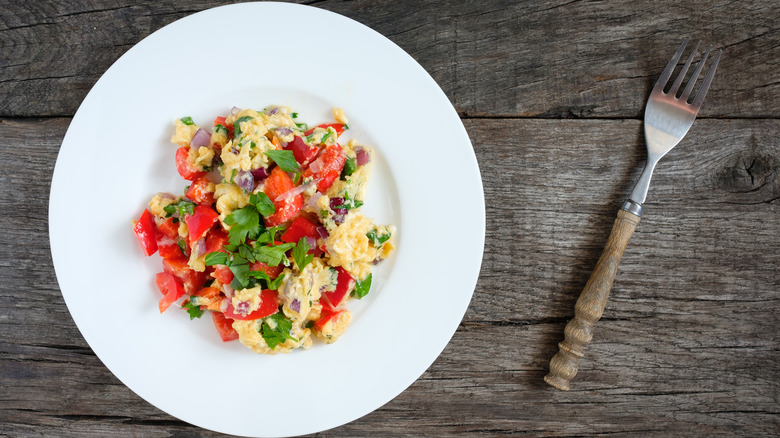Here's Why Your Scrambled Eggs Turned Out Super Watery
If there was a spectrum for egg dishes, ranging from child-friendly to chef-level, it would be hard-boiled eggs on one end and egg curry on the other end. Scrambled eggs are probably closer to the child-friendly end given that it is one of the first few dishes many of us learned to cook. However, it is also a finicky dish to get right if you grew up into an adult with discerning tastes and a love for brunch. Overcook it and it becomes dry and rubbery. Double the recipe and the eggs overcrowd the pan and cook inconsistently.
There are some basic tips for making silky scrambled eggs which range from using the right kitchen tools (e.g. nonstick pans and spatulas) to incorporating as much air as possible into the egg mixture before cooking it (using a whisk or even an immersion blender). Still, there is a small chance that the scrambled eggs will become watery, which is especially noticeable after you place them on a plate. What went wrong?
Overcooking is the main culprit for watery scrambled eggs
Science has a good explanation for this. Eggs are made up of water, protein, and fat. When the eggs are cooked (or scrambled) the proteins start to combine and form a spongy texture that traps moisture. When the protein is cooked for too long over a temperature that is too high, the trapped moisture starts to leak out like a sponge that is being wrung out. This process when water separates from eggs while cooking is aptly called weeping, which is usually the result of overcooking.
There are a few ways to avoid this, ranging from the obvious to the not-so-obvious. Firstly, always cook scrambled eggs over low to medium heat and never high heat. This is sometimes counterintuitive as we have been conditioned to think of scrambled eggs as a "quick" breakfast. But as it turns out, cranking up the heat to cook eggs makes them wet and soggy.
Secondly, remove the eggs from the heat as soon as they're firm or even a touch before, because the eggs will continue to cook with the residual heat. This step requires a bit more experience to know when the eggs are set, as many of us err on the side of caution by overcooking the eggs just to be sure.
But also avoid adding too much moisture to the egg mixture
Adding liquid such as milk or cream to the scrambled eggs mixture is a delicate balance. The right amount will give the scrambled eggs a rich and soft texture but adding too much will result in a watery goop, because the milk and eggs do not combine well together and have different cooking times. The milk does not evaporate as quickly as the eggs can cook so we are left with excess liquid. A good rule of thumb is to only add 1 to 2 tablespoons of milk for every egg.
Adding vegetables to scrambled eggs sounds like a good way to make it a one-pot meal but annoyingly, many of the vegetables that go well with eggs contain water, like onions, tomatoes, and zucchini. This increases the chances of watery scrambled eggs, especially if you cook it all together. A good way to manage this is to cook the vegetables in butter or oil first so that the water in the vegetables cooks off before adding the egg mixture.
Alternatively, pair scrambled eggs with bacon. There's no moisture there to interfere with scrambled eggs.


